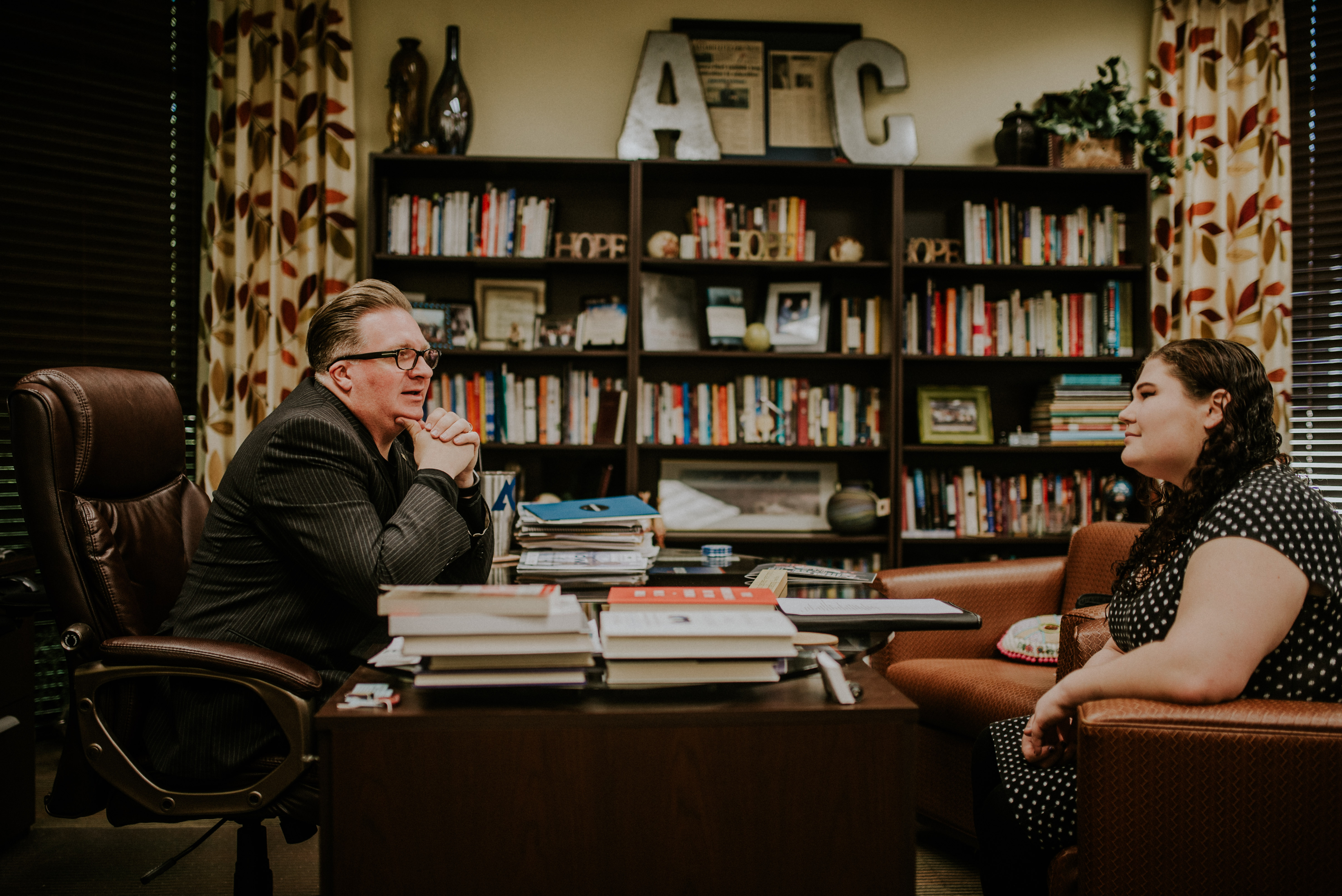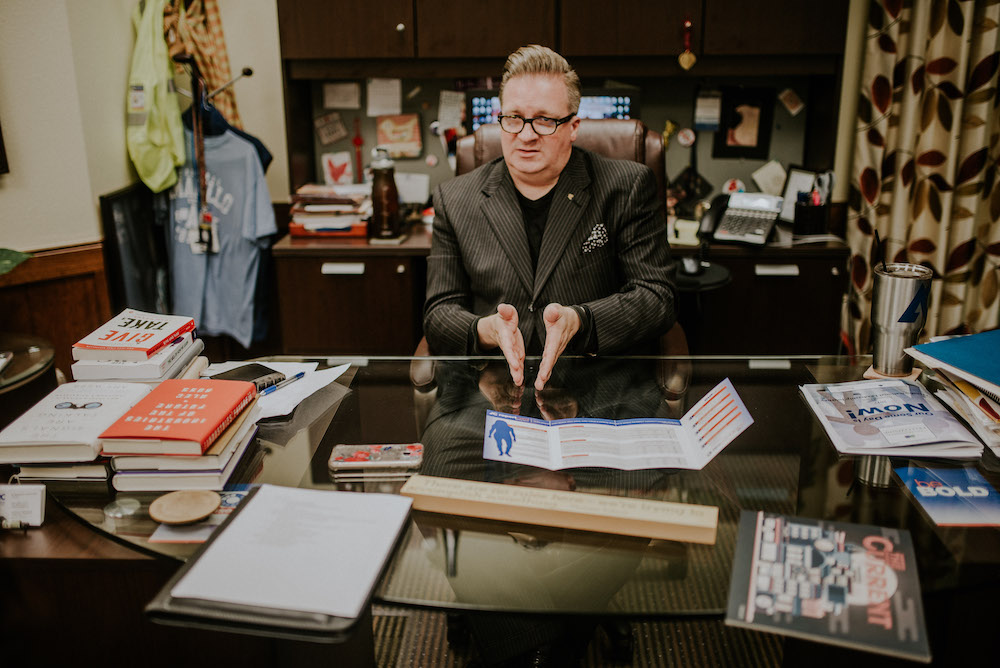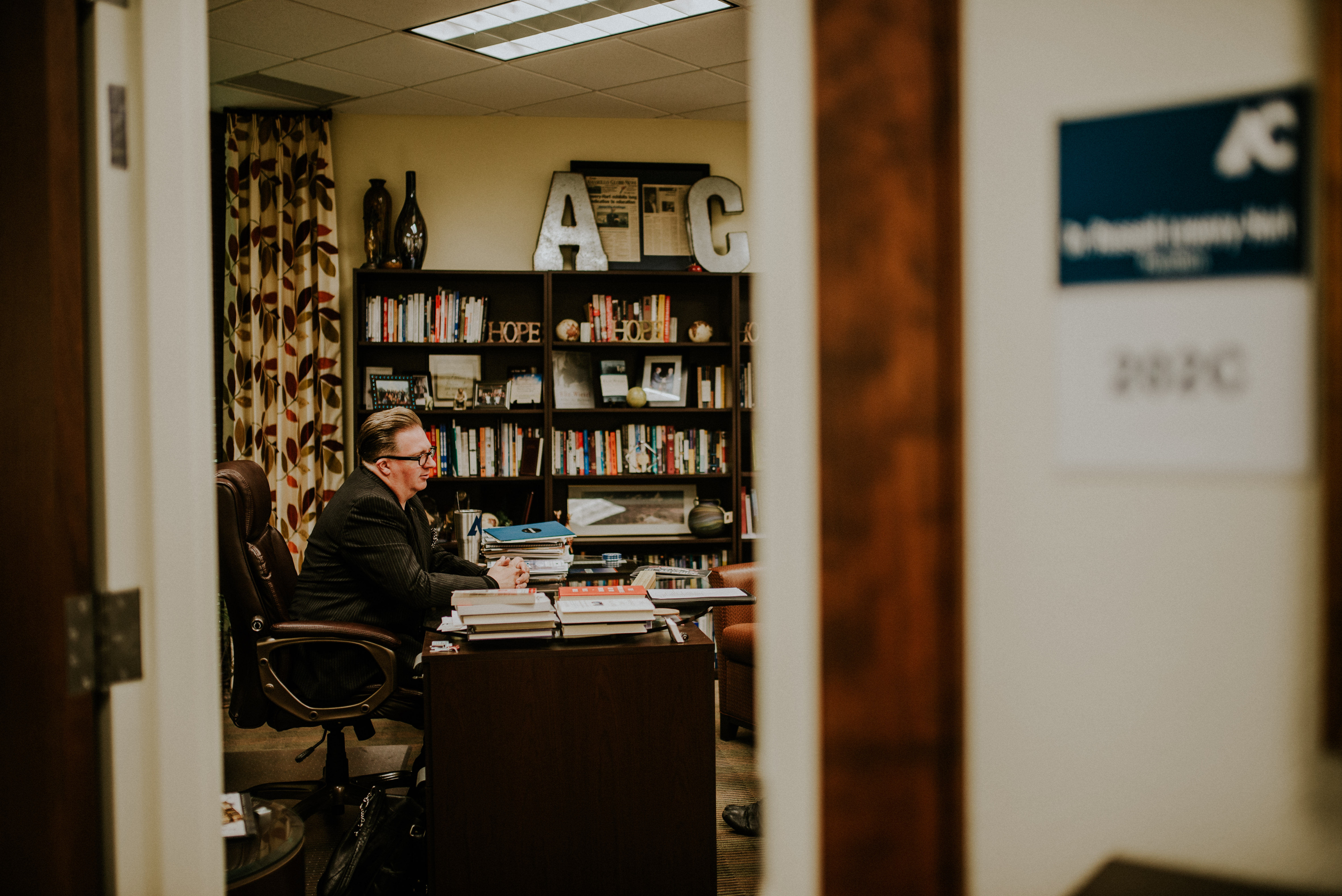Dr. Russell Lowery-Hart took presidency at Amarillo College in 2014. Since taking presidency, Lowery-Hart has increased school enrollment by reassessing values in higher education.
Through budget cut reformations and innovative new ideas, Lowery-Hart influences not only his student’s success rates but also the community’s success rate in fields of education attainment and workforce readiness.
Celeste Paulson: What was your upbringing like?
Russell Lowery-Hart: I grew up on a farm outside of Lubbock in a small town called Wilson. There were 11 people in my class. I grew up with a mom who was the Director of Special Education and was professional but a biological father who didn’t have education and did manual labor. I grew up in the country and was kind of isolated from people.
I grew up in the rodeo and had horses that I showed, but at the same time, I did theater, band and played every sport offered. My family life wasn’t ideal, so school activities gave me a safe space to grow and develop. Most people are surprised I wore boots and wranglers all the way until my freshman year of college. I have a younger brother who is still full-on cowboy.
I went to West Texas A&M for my undergrad and really felt like I found my personal voice. College was a place where I realized I could be who I was and could define what that meant. I went to Texas Tech for my Master’s Degree and found my professional voice. I got my Ph.D. at Ohio University.
It wasn’t until I moved to Ohio that I realized how much I loved the Panhandle and Texas, the people and the pioneer spirit. We take care of each other here, and I missed that sense of community, so I felt honored to come back.
Paulson: How would you define the Amarillo community?
 Lowery-Hart: I think Amarillo is a town with real grit and determination. It’s a town that doesn’t need a lot of external support because we’re going to take care of our problems together.
Lowery-Hart: I think Amarillo is a town with real grit and determination. It’s a town that doesn’t need a lot of external support because we’re going to take care of our problems together.
We have a long history of doing that. If you look at this community, every time there was a major issue such as the Great Depression, where a lot of communities were struggling, Amarillo launched a community college.
In the middle of the Great Depression, this community knew it needed to commit to higher education. Amarillo came together to find ways to solve economic issues. It’s really a determined community focused on solving our problems together.
Paulson: How did you end up at AC?
Lowery-Hart: I was a part of a group called Panhandle Twenty/20 that studied education attainment rates and really linked education attainment rates to our economic future. We were becoming less educated as a community and poorer.
In facilitating that yearlong study on education attainment rates and working on the report, it became really clear that the future of the community was through the community’s college. I wanted to be a part of that.
When the Vice President of Academic Affairs position came open, I applied for it and was lucky enough to receive it. When Dr. Matney retired, what I thought the community could be drove me to apply for the presidency.
Paulson: What improvements have you seen since taking presidency?
Lowery-Hart: When I first stepped into this role, we had a big budget cut and it was painful. There was a lot of economic uncertainty. Enrollment was down, but our expenses were up.
Right now, we are in a really strong economic position. Our enrollment has increased and our students are more successful. We have one of the largest graduating class this year. Our students look like our community does.
When you’re trying to lead reforms, you can only do this by collaboration. Our students helped us rewrite our values. Every employee understands expectations in serving our students. The values are “wow,” “innovation,” “family,” “fun” and “yes.”
Students wanted interactions to be helpful, and for us to be innovative. They want to be a part of a family. Many of our students in this community hear “no” all the time, so we want to always get to a “yes.” In 10 years, I want to see AC as the best community college in the country.
Paulson: What drives your passion for helping AC students graduate?
Lowery-Hart: I know them: how smart they are, how big their dreams are, and how daunting their fears are. I’ve fallen in love with them. The average Amarillo College student is 27, has 1.2 kids, and is a minority. They work really hard to give their family a future.
Paulson: There is a stigma that AC is “just a community college.” What would you say to that?
 Lowery-Hart: 61 percent of all AISD graduates start at AC. The data is overwhelming that community college students that transfer to universities outperform their native students.
Lowery-Hart: 61 percent of all AISD graduates start at AC. The data is overwhelming that community college students that transfer to universities outperform their native students.
Community college students are smart, capable, dedicated and sure of what they want. We just have to make sure we provide the support to get them there.
WT is a great partner; our students do really well there. Our community needs AC and WT to work in cooperation with each other, not in competition with each other.
Paulson: Tell me about the Aspen Institute.
Lowery-Hart: The Aspen Institute is a think-tank on innovation. They have a college excellence division that focuses on helping community colleges zero-in on completion – that students finish what they start and then transfer to university or go directly into the workforce and a living wage job.
They’ve created the Aspen Presidential Fellows, which are a cohort of 40 people who spend a year together trying to figure out how to redesign higher education for the students we have in the communities we live in. I applied for that and went through an interview and application process.
I was so honored to be a part of that group. It was the best professional development experience I’ve had in my life. I just completed it, and I feel like I have my own family of presidents and future presidents.
Schools across the country are coming to Amarillo to see what we’re doing on issues of poverty and how we’re accelerating learning. Aspen has been a great partner and their inclusion of me and Amarillo College is a statement from them on our value and what we are trying to do.
I learned how to be more intentional with our goals and values. The social belonging theory suggests that students, especially first-generation college students, are really fearful that they don’t belong or fit in higher education.
I realized that we have a responsibility in our first 30 minutes of a relationship with prospective students to help them feel connected to the college and that they have a place here. Learning how to be more effective in communicating that with not only students, but with employees, has been really transformative.
Paulson: What would you say to prospective students wanting to enroll at AC?
Lowery-Hart: We’re here to help every single citizen in this community. We have employees here to help. The no. 1 job for every employee at Amarillo College is to help every student who walks in our office or in our pathway.
This place will find a way to help you be successful. We are a no-excuses school, and that means we have no excuses. If you have a barrier, we have to find a solution to it. We care about them and their families. I want students to give me a chance to show how much we care.

Innovators like Dr. Lowery-Hart are changing the face of education in Amarillo.
For more information on how educational leaders in Amarillo are making a difference, read our interview with Dana West, superintendent of Amarillo ISD.








